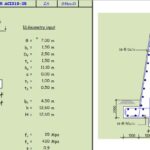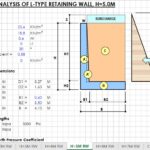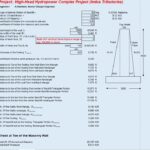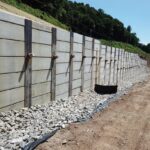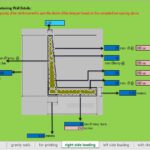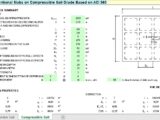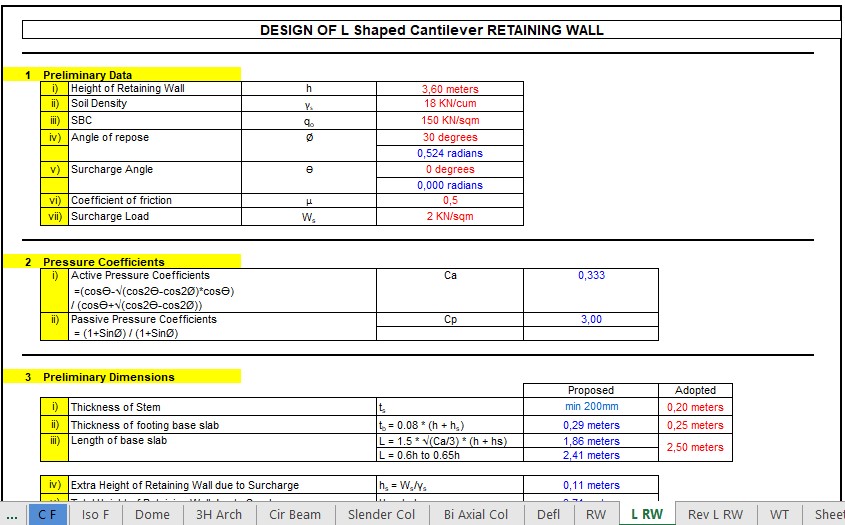
Design Of L Shaped Cantiliver Retaining Wall Spreadsheet
28 January 2023Design Of L Shaped Cantiliver Retaining Wall Spreadsheet
Retaining walls are essential in construction projects, especially when dealing with uneven terrain, slopes, or structures that require ground support. Among the various designs, the L-shaped cantilever retaining wall stands out for its efficiency, strength, and versatility. In this article, we explore the design, benefits, applications, and construction considerations for L-shaped cantilever retaining walls.
What is an L-Shaped Cantilever Retaining Wall?
An L-shaped cantilever retaining wall is a reinforced concrete structure designed to hold back soil, prevent erosion, and stabilize slopes. The wall is characterized by its L-shaped base, where one leg of the “L” lies horizontally beneath the retained soil, providing stability through counterbalancing forces. The vertical portion of the wall acts as the retaining face, while the horizontal base ensures structural integrity by resisting overturning and sliding.
How Does an L-Shaped Cantilever Retaining Wall Work?
The design leverages the principles of cantilever mechanics. The weight of the retained soil above the horizontal base creates a downward force that helps stabilize the wall against lateral earth pressure. This interaction makes the L-shaped cantilever wall both economical and efficient.
Advantages of L-Shaped Cantilever Retaining Walls
- Cost-Effective Design
- Uses less concrete compared to gravity retaining walls due to the efficient use of reinforcements.
- High Stability
- Excellent resistance to overturning and sliding due to the wide base and cantilever action.
- Efficient Land Use
- Requires less space behind the wall, making it ideal for projects with limited backfill area.
- Versatility
- Suitable for various applications, including highways, landscaping, and building foundations.
- Durability
- When properly designed and constructed, it offers long-lasting performance with minimal maintenance.
Applications of L-Shaped Cantilever Retaining Walls
L-shaped cantilever retaining walls are used in a variety of projects, including:
- Highway Construction: Stabilizing embankments and slopes along roads.
- Residential Landscaping: Managing elevation changes in gardens and yards.
- Industrial Sites: Supporting soil near machinery or storage areas.
- Bridge Abutments: Providing lateral support for soil beneath bridges.
- Urban Development: Maximizing usable space in cities by stabilizing steep slopes.
Design Considerations
To ensure the effectiveness of an L-shaped cantilever retaining wall, engineers must consider the following:
- Soil Properties: Analyze soil type, density, and angle of repose to design appropriate dimensions.
- Reinforcement Details: Optimize steel reinforcements for tensile and shear strength.
- Drainage Systems: Include weep holes or perforated pipes to prevent hydrostatic pressure buildup.
- Base Dimensions: Ensure the horizontal base provides adequate resistance to sliding and overturning forces.
- Seismic Loads: Factor in dynamic forces if the structure is in a seismically active zone.
Construction Process
- Site Preparation: Clear and level the site, ensuring a stable foundation.
- Excavation: Excavate the area for the horizontal base.
- Formwork and Reinforcement: Install formwork and place steel reinforcements as per the design.
- Concrete Pouring: Pour concrete into the formwork and allow it to cure properly.
- Backfilling: Gradually backfill the area with compacted soil while ensuring proper drainage.
Maintenance Tips
- Regularly inspect for cracks or signs of erosion.
- Clear any clogged drainage systems to prevent water pressure buildup.
- Apply protective coatings to minimize weathering and enhance durability.
Conclusion
The L-shaped cantilever retaining wall is a reliable and efficient solution for retaining soil in various construction scenarios. Its cost-effectiveness, versatility, and structural stability make it a go-to choice for engineers and builders alike. Whether you’re working on a highway project, a residential development, or an industrial site, this retaining wall design ensures safety and durability.

